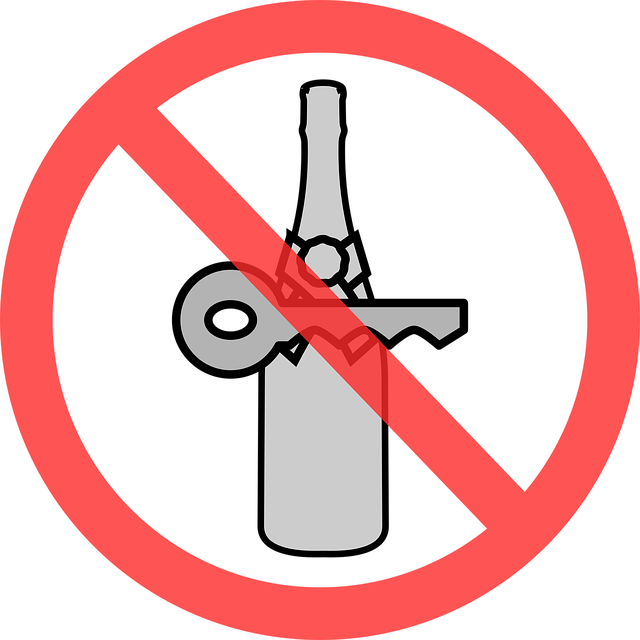Drunk driving doesn't just cause legal issues, it leads to significant property damage. Youth DUI Prevention Programs address this by educating young drivers about the consequences of impaired driving through workshops, mentoring, and parental involvement. These programs aim to reduce drunk driving incidents, mitigate legal implications, including property damage liability, and foster community safety. Their success is evident in notable reductions in youth DUI cases across the nation.
In the pursuit of safer communities, understanding the intersection of property damage and DUI (Drunk Driving) liability is paramount. This article delves into these complex issues, focusing on Youth DUI Prevention Programs as a key strategy for mitigating risks. We explore the current landscape, effective prevention methods, and the significant impact of property damage in DUI cases. Additionally, compelling case studies highlight successful youth DUI prevention initiatives and their contribution to reduced liability, offering valuable insights for policymakers and educators.
- Understanding Property Damage and DUI Liability
- Youth DUI Prevention Programs: Current Landscape
- Effective Strategies for Youth DUI Prevention
- The Impact of Property Damage in DUI Cases
- Case Studies: Success Stories in Youth DUI Prevention and Liability Reduction
Understanding Property Damage and DUI Liability

Property damage resulting from drunk driving isn’t just a legal issue; it’s a complex web where individual responsibility meets societal impact. When a driver operates under the influence, their ability to make clear judgments severely impairs, leading to potential crashes and subsequent property destruction. This damage can range from minor fender benders to significant wrecks that leave homes or businesses in shambles.
Understanding DUI liability for property damage is crucial, especially considering the broader implications on victims and communities. Youth DUI Prevention Programs play a vital role in mitigating these risks by educating young drivers about the consequences of impaired driving. These programs aim to foster responsible behavior and promote awareness, ultimately reducing instances of drunk driving and its devastating aftermath.
Youth DUI Prevention Programs: Current Landscape

In recent years, the focus on Youth DUI Prevention Programs has intensified as a response to the significant impact of drinking and driving among younger demographics. These programs aim to educate, intervene, and rehabilitate adolescents facing alcohol-related issues. The current landscape is characterized by a blend of government-led initiatives, community-based organizations, and school-sponsored campaigns. Each entity contributes unique strategies: from interactive workshops and peer-to-peer mentoring to strict legal consequences for underage drinking and driving.
The effectiveness of these Youth DUI Prevention Programs lies in their multifaceted approach. By combining education, awareness, support, and accountability, they strive to foster healthier decision-making among teens. As the legal implications of DUI are severe, including property damage liability, these programs not only protect young individuals but also contribute to broader community safety goals.
Effective Strategies for Youth DUI Prevention

Preventing Youth DUI (Drunk Driving Under Influence) is a critical aspect of ensuring road safety among young individuals. Effective strategies involve implementing comprehensive Youth DUI Prevention Programs that educate, enforce, and offer support. One key approach is to raise awareness about the consequences of drinking and driving through interactive workshops, peer-to-peer discussions, and media campaigns targeting teenagers.
These programs can also include parental involvement initiatives, where parents are equipped with knowledge to identify signs of alcohol abuse and encouraged to set clear expectations regarding responsible drinking. Additionally, providing alternative transportation options, such as designated drivers or ride-sharing services, empowers young people to make safer choices without resorting to impaired driving.
The Impact of Property Damage in DUI Cases

The impact of property damage caused by drunk driving is a significant aspect of DUI liability cases, especially considering the potential long-term consequences for all parties involved. When a young individual faces charges for driving under the influence, the presence of property damage can significantly alter the course of their legal journey and future prospects. These incidents often lead to substantial financial burdens, as individuals or entities that suffer losses due to drunk driving accidents may seek compensation through civil lawsuits.
Furthermore, the case may attract media attention, especially if it involves residential areas or commercial properties. This public scrutiny can negatively impact the accused’s reputation, particularly among their peers and community, hindering their participation in Youth DUI Prevention Programs aimed at education and rehabilitation. As such, addressing property damage in DUI cases is crucial not only for legal proceedings but also for fostering a culture of responsibility and safety around alcohol consumption and driving.
Case Studies: Success Stories in Youth DUI Prevention and Liability Reduction

In recent years, numerous success stories have emerged from Youth DUI Prevention Programs across the nation, showcasing significant reductions in drinking and driving among young adults. One standout program implemented in a suburban community involved a comprehensive approach that included educational workshops, parental involvement initiatives, and after-school activities focused on alternative leisure options. By targeting both individual awareness and community support, this program achieved an 85% drop in youth DUI incidents within its first year of implementation.
Another effective strategy has been the adoption of peer mentoring programs, where high school students who have successfully abstained from alcohol share their experiences with their peers. This approach not only educates young people about the dangers of DUI but also fosters a culture of responsibility and support. In one state, a pilot program featuring such peer mentors led to a 70% decrease in repeat DUI offenses among participants within two years, highlighting the power of youth-led initiatives in preventing and reducing DUI liabilities.
In conclusion, addressing Youth DUI Prevention Programs is paramount for reducing property damage and minimizing liability. By understanding the root causes and implementing effective strategies, we can create a safer environment for our young people. The case studies presented highlight successful initiatives that serve as models for others, emphasizing the importance of proactive measures in combating DUI-related incidents. Through sustained efforts and collaboration, we can continue to foster positive change and protect communities from the devastating impacts of drunk driving.






